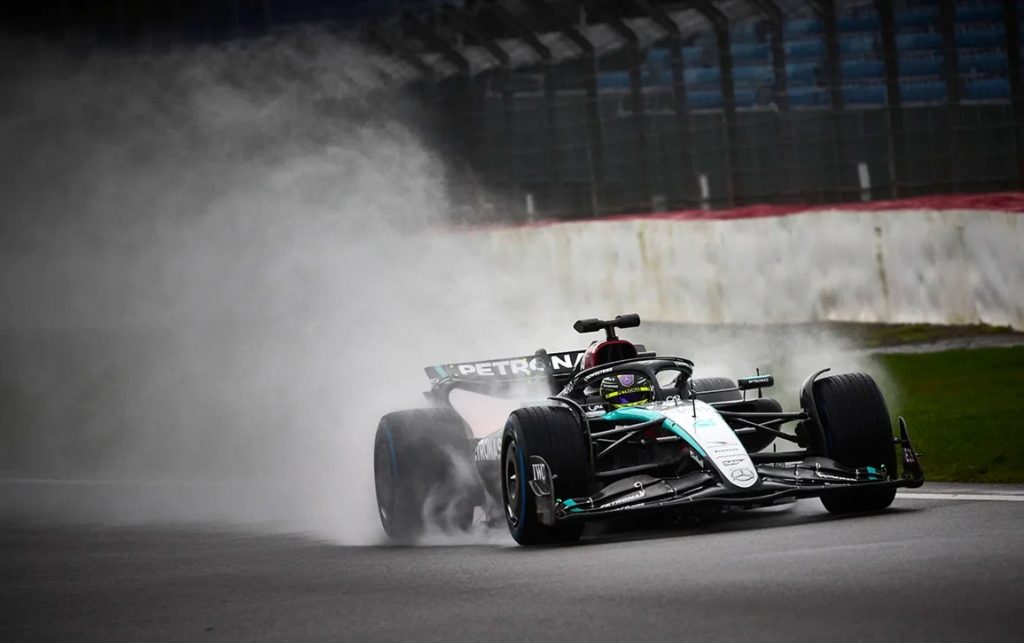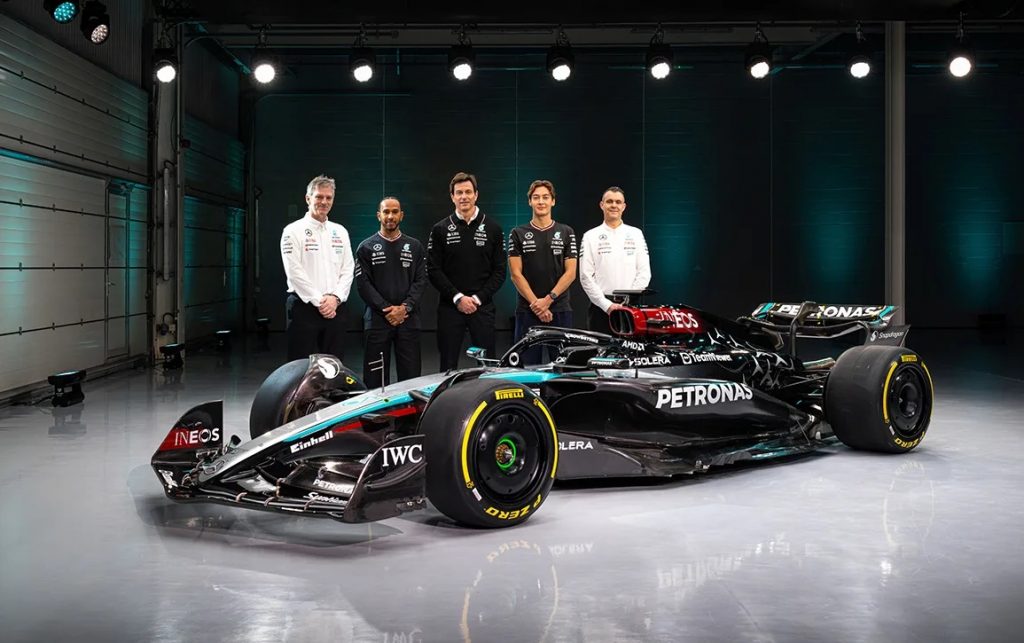Mercedes F1 W15 Race Car Frontal Design Sparks Debate
Giancarlo Perlas February 18, 2024Mercedes-AMG Petronas Formula 1 Team just unveiled its 2025 season contender: the W15. Compared to its winless predecessor, the W14, the new race car features some upgrades, particularly on its fascia. However, it is from this same design that seemingly pushed the envelope to the boundaries of F1 regulations that got everyone talking.

At the heart of the debate is the W15’s front wing, notably for its compact nose that merges the wing’s second flap in what appears to be an attempt to optimize aerodynamic efficiency. This feature is a significant leap from traditional designs, suggesting Mercedes is looking to exploit certain nuances within the FIA’s 2022 aerodynamic regulations. These rules were initially introduced to minimize aerodynamic wake and improve overtaking capabilities—a challenge that has seen teams scramble for competitive advantage.
The ingenuity doesn’t stop there. Mercedes’ design also includes a cunning adaptation related to the Y250 vortex—an airflow management technique critical for underneath aerodynamics but restricted under the new regulations. By potentially reintroducing elements of this technique, Mercedes seems set on optimizing performance while flirting with the boundaries of legality.

The revamp signifies Mercedes’ aggressive response to the restrictions that have seen them struggle in the past two seasons with their W13 and W14 iterations. By significantly redesigning the front aerodynamics, including a radical take on the nose and front wing, Mercedes is not just aiming for compliance but for competitive superiority.
This move has sparked widespread discussion on where the line should be drawn between innovation and rule adherence. The design’s legitimacy, particularly concerning the clever integration of the wing’s fourth flap with a legality wire, has raised eyebrows, hinting at Mercedes’ strategic maneuvering within the FIA’s regulatory framework. This approach, leveraging what some view as a loophole, showcases the team’s commitment to finding every possible advantage under the current set of rules.
Whether or not this risky gamble will pay off stands to be seen during the pre-season testing in Bahrain this coming February 21 to 23.



